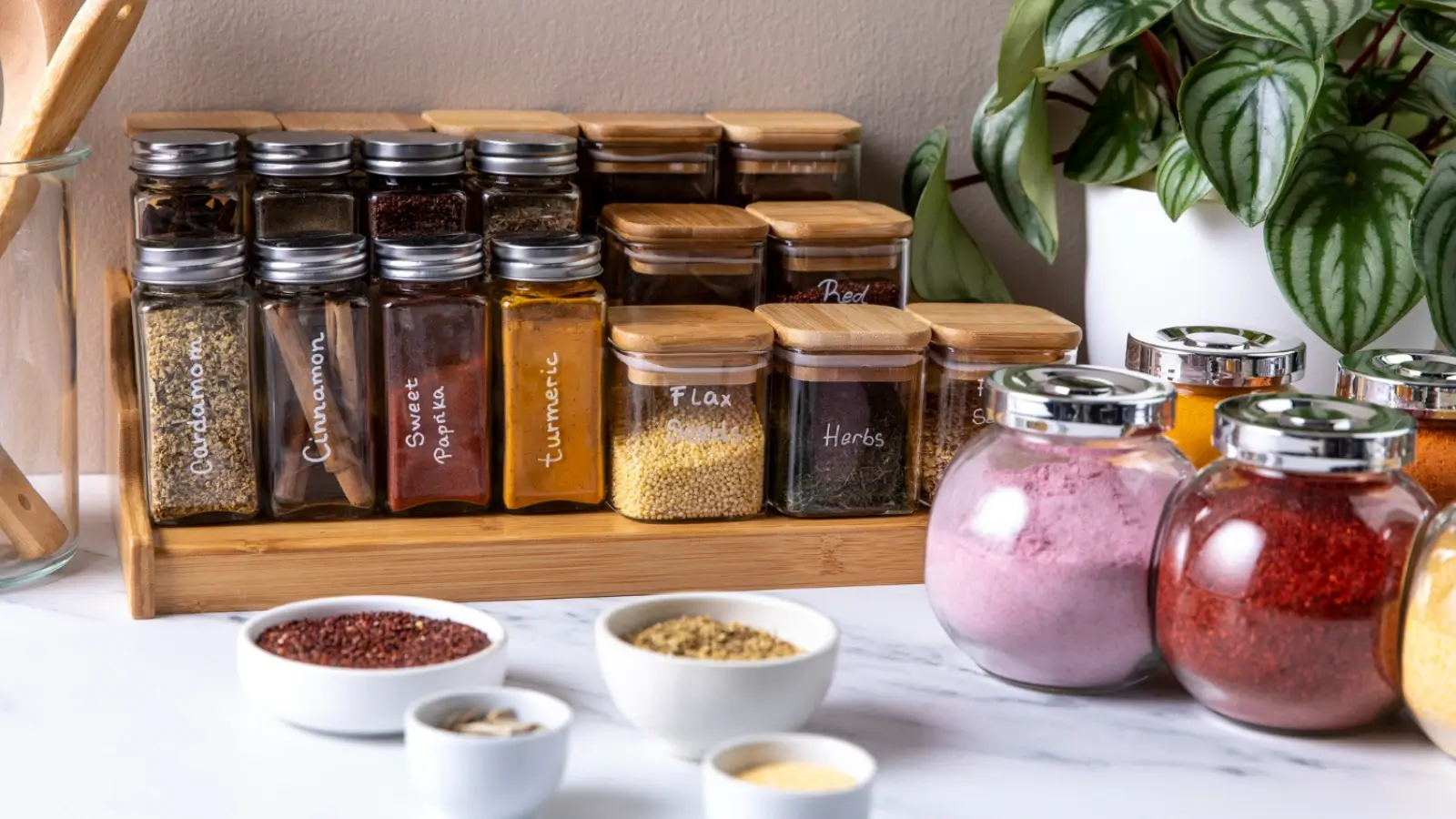


Your kitchen transformation starts with one decision: choosing spices and seasonings that actually make a difference. Modern home chefs demand sophisticated flavor profiles that transform ordinary meals into restaurant-quality experiences. Professional chefs understood the secret long ago, and it is that quality spices and seasonings create the foundation for exceptional cooking, not just an afterthought.
Fresh, high-quality spices & seasonings deliver much more flavor than their grocery store counterparts. Spiceology's chef-founded approach proves this daily: Small-batch production and direct sourcing create blends that maintain volatile oils and complex flavor compounds.
Whole spices retain their potency for 2-3 years, while pre-ground varieties lose their punch within 6-12 months. This is why professional kitchens invest in premium spice sources and proper storage systems.
Whole spices come with maximum flavor potential and longevity. Cumin seeds, coriander, black peppercorns, and cinnamon sticks provide grinding options for different recipes. You can immediately taste the difference—fresh-ground spices deliver aromatic compounds that pre-ground versions simply can't match.
Ground spices work perfectly for quick applications. When sourced from quality suppliers, turmeric powder, paprika, garlic powder, and onion powder offer convenience without sacrificing too much flavor.
Indian spice blends feature warming profiles like garam masala, cardamom, fenugreek, and asafoetida, which create authentic depth while providing anti-inflammatory benefits through compounds like curcumin.
Mediterranean seasonings emphasize fresh herbs, such as oregano, basil, rosemary, and thyme, often paired with garlic and lemon zest. These profiles perfectly complement olive oil-based cooking.
Many spices pack nutritional value alongside flavor. Turmeric provides curcumin, which reduces inflammation, while cinnamon helps regulate blood sugar. Cloves contain eugenol, which offers antimicrobial properties that support overall wellness.
Ginger aids digestion and reduces nausea, and garlic supports cardiovascular health through allicin compounds. This is why spice combinations work so well together.
Salt-free seasoning blends cater to health consciousness without compromising flavor. Herb blends, citrus zest combinations, and umami-rich mushroom powders can reduce sodium intake while maintaining satisfaction.
Likewise, nutritional yeast provides a cheesy flavor with B vitamins, and smoked paprika adds depth without extra sodium.
Store spices in cool, dark locations away from heat to extend their shelf life. Ideal temperatures range between 60-70°F with low humidity to prevent clumping and mold growth.
Airtight containers prevent moisture infiltration and volatile oil loss. Glass jars with tight-sealing lids work best, while plastic containers absorb odors over time. Label containers with purchase dates for freshness tracking.
Whole Spices: 2-3 years when stored properly
Ground Spices: 6-12 months maximum
Dried Herbs: Replace every 1-2 years
Spice Blends: Follow the timeline of the most volatile components
Regular smell tests can help identify spices needing replacement before they ruin recipes.
Custom blending can help achieve personalized flavor profiles for specific cooking styles. Start with base spices like cumin, coriander, and paprika, then add accent spices for complexity. Toasting whole spices before grinding intensifies flavors dramatically.
Popular homemade blends include:
Taco Seasoning: Chili powder, cumin, paprika, oregano
Curry Powder: Turmeric, coriander, fenugreek
BBQ Rubs: Brown sugar, paprika, garlic powder
Professional chefs use layering techniques for cooking. Blooming spices in oil releases aromatic compounds. Finishing with fresh herbs provides bright top notes. Marinating proteins with spice pastes allows deeper penetration.
Timing also matters. Hardy spices like bay leaves and cinnamon can withstand long cooking times, while delicate herbs should be added near completion to preserve their freshness.
Sustainable sourcing ensures fair farmer compensation while upholding environmental responsibility. Direct trade relationships provide better producer prices, and organic certification guarantees pesticide-free cultivation, protecting consumers and ecosystems.
Small-batch processing is ideal for maintaining quality control while supporting local economies in spice-producing regions.
Premium spices have vibrant colors, intense aromas, and consistent textures. Grinding spices immediately before use intensifies their flavor. While proper packaging protects against light and moisture damage, reputable suppliers also provide sourcing information and freshness guarantees.
Modern chefs combine traditional spice applications with innovative techniques. Molecular gastronomy uses spices in foam and gel applications, and sous vide cooking allows precise temperature control for spice infusions.
Fermentation processes are used to develop complex umami flavors using spices as catalysts. Smoking techniques with spice-infused wood chips create unique aromatic profiles for proteins and vegetables.
Plant-based cooking uses spices for satisfying flavors without animal products. Umami-rich combinations using mushroom powders, miso, and nutritional yeast provide depth previously achieved through meat-based ingredients.
Korean-Mexican fusion uses gochujang with traditional Mexican spices. Indian-Italian combinations feature curry-spiced pasta sauces. These global fusion trends create exciting new taste experiences.
Start with essential base spices like cumin, coriander, paprika, garlic powder, and black pepper, and add regional specialties (garam masala for Indian cuisine and herbes de Provence for French cooking) based on your cooking preferences.
Always invest in quality storage solutions and source from reputable suppliers who prioritize freshness and ethical sourcing. Curated selections based on cooking preferences simplify the discovery process while expanding your culinary horizons.